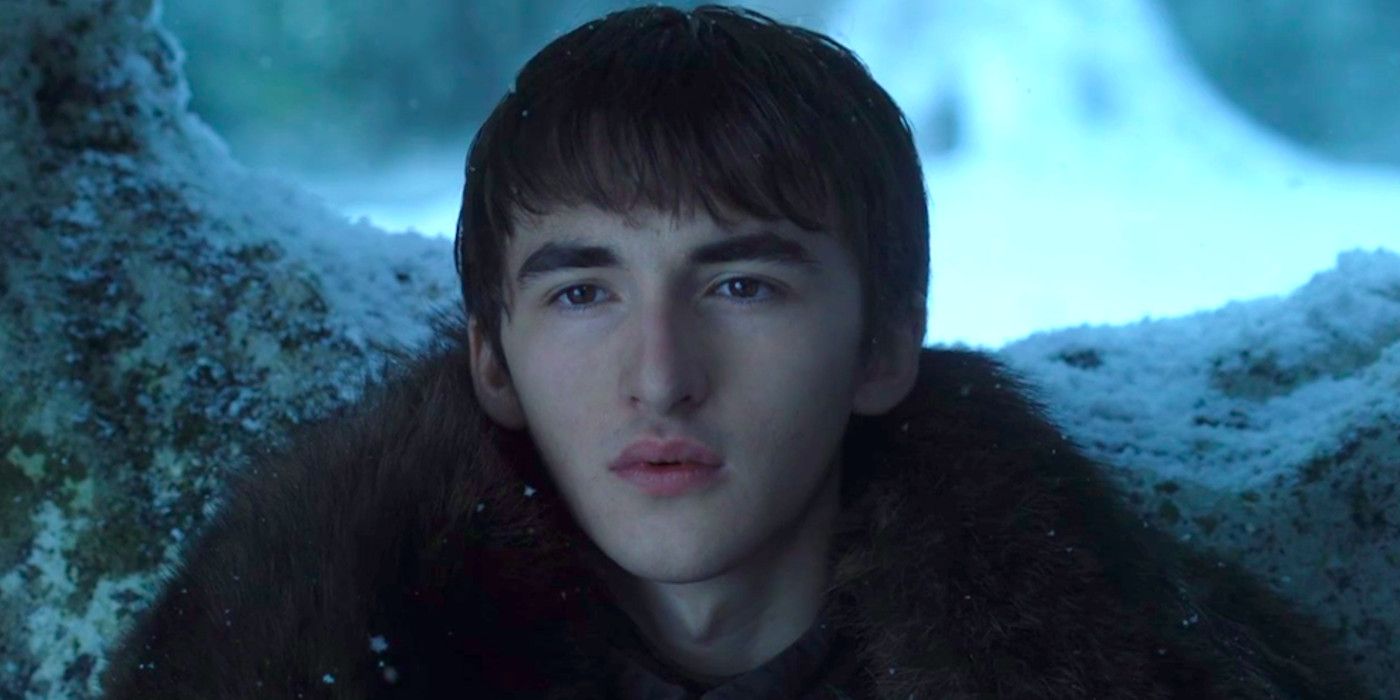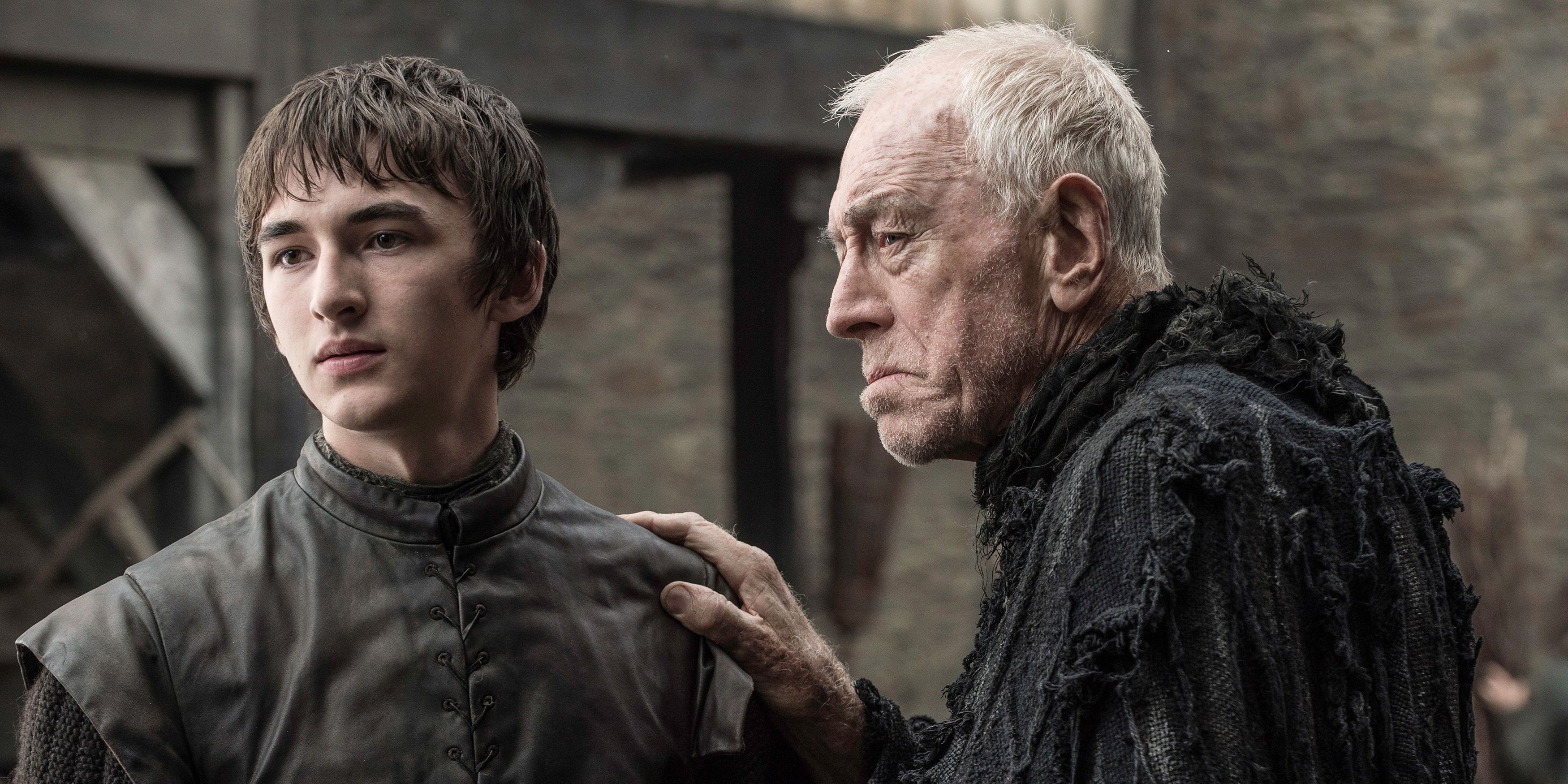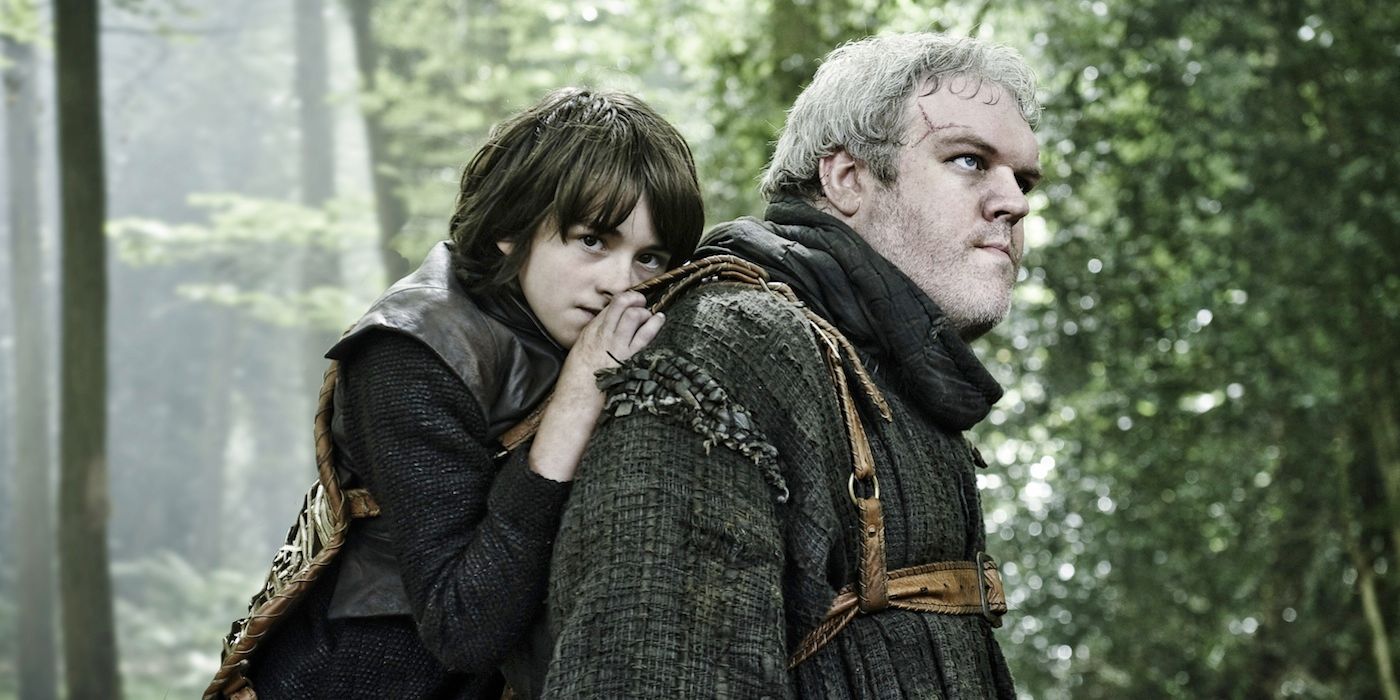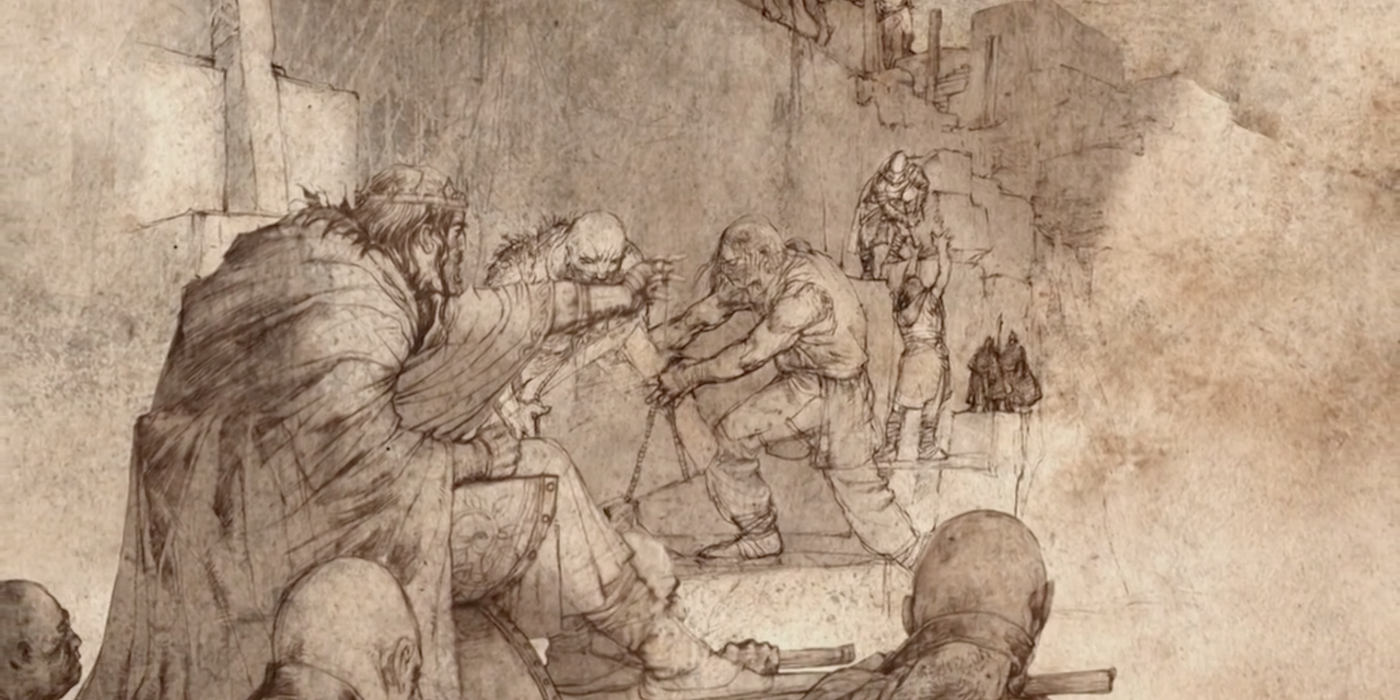Bran Stark exists in name only. For all intents and purposes, he is now the Three Eyed Raven. Despite being the most enigmatic and powerful character in Game of Thrones, Bran has been on the backburner in season seven. Though he is now reunited with his sisters at Winterfell, Bran keeps mum on the impending arrival of the White Walkers, only letting slip rather unsavory details about Sansa’s wedding night and Arya’s hitlist.
Though poor Meera Reed attempted to offer a loving (if not romantic) goodbye in “The Spoils of War,” she was met with the harsh reality that the Bran she helped save has withered into a warging, greenseeing shell of his former self. When she calls him by his name, Bran retorts, “I’m not really. Not anymore. I remember what it felt like to be Brandon Stark, but I remember so much else now.”
What does he remember, and how will his knowledge affect the wars to come?
Time Travel in Game of Thrones
Through the first five seasons of the show, the Game of Thrones narrative unfolded linearly. While accommodating the occasional flashback, the story never indicated that actual time travel would come into play. That familiar structure collapsed when Bran linked up with the Three Eyed Raven and learned how to master his visions and potential as a “greenseer.”
Whereas a “warg” can possess the minds of animals, a greenseer can tap into the network of Weirwood trees and see everything from their aged vantage point. Bran is both a warg and a greenseer, however, making for a rare combination in the world of Westeros. As Bran is told in A Song of Ice and Fire, “Only one man in a thousand is born a [warg]…and only one [warg] in a thousand can be a greenseer.” This gives Bran truly limitless powers in accessing history and possibly altering the past for present and future gain.
In season six, audiences were stunned by Bran’s ability to interact with the world decades before he was born. Outside the Tower of Joy, Bran called out for his father and succeeded in compelling a young Eddard Stark to turn on his heels and look for the looming voice. Though Bran marveled at his undeniable influence, the Three Eyed Raven insisted, “the past is written. The ink is already dry.” If the ancient greenseer says the past is fixed, then that must be so.
But what if the old raven lacks Bran’s unprecedented abilities? Or what if he’s lying? In A Song of Ice and Fire, “voices on the wind” are a regular occurrence, and Bran frequently visits his living and deceased family through the Weirwood portal.
In A Dance With Dragons, he seeks out his long-dead father and gets a response:
"Lord Eddard Stark sat upon a rock beside the deep black pool in the godswood, the pale roots of the heart tree twisting around him like an old man's gnarled arms. The greatsword Ice lay across Lord Eddard's lap, and he was cleaning the blade with an oilcloth. 'Winterfell,' Bran whispered. His father looked up. 'Who's there?' he asked."
In A Clash of Kings, Bran greensees into the past and speaks to Jon Snow (who dreams while warging into his direwolf, Ghost):
"Jon?
The call came from behind him, softer than a whisper, but strong too. Can a shout be silent? He turned his head, searching for his brother, for a glimpse of a lean grey shape moving beneath the trees, but there was nothing, only...A weirwood.
It seemed to sprout from solid rock, its pale roots twisting up from a myriad of fissures and hairline cracks. The tree was slender compared to other weirwoods he had seen, no more than a sapling, yet it was growing as he watched, its limbs thickening as they reached for the sky. Wary, he circled the smooth white trunk until he came to the face. Red eyes looked at him. Fierce eyes they were, yet glad to see him. The weirwood had his brother’s face. Had his brother always had three eyes?"
While many ASoIaF aficionados have denied the usage of time travel in George R. R. Martin’s books, they were silenced when the origins of Hodor’s name were revealed. In that fateful episode, we learned that Bran was responsible for turning Wylis into a simpleton. As the White Walkers closed in on their doomed cave, Meera commanded Hodor to “hold the door,” words that were transported to young Wylis as Bran warged into him from the present day.
This is a difficult scene to interpret. Assuming fate and destiny are at place in Game of Thrones, then Bran was always going to scramble Hodor’s consciousness. This is the essence of Novikov’s “Self-Consistency Principle,” which claims that all events happen in a closed loop, and any alterations to the past were not only predestined to happen, but they already have happened (think time turners in Harry Potter and the Prisoner of Azkaban).
Poor Hodor was dealt a bad hand, but the actual rules of time travel in GRRM’s world remain amorphous. Despite our best attempts to make sense of what we know in the novels and what David Benioff and D.B. Weiss have shown us on screen, we are largely wandering about in the dark. And yet, the night is dark and full of tantalizing theories.
Who Is Bran?
The world of Westeros defies logic, and it’s particularly useless with Bran. On the one hand, Eddard’s son may just be a supremely gifted boy who happened to survive a 10-story fall, escape marauding White Walkers, and live to not only tell about it, but tell everyone else what he knows about their lives. It’s almost impossible to accept that Bran is just another greenseer with an omniscient perspective of Westeros.
In questioning Bran's true identity, we encounter some of the most crackpot, tinfoil covered theories this side of JFK and the grassy knoll. Here are a few:
Bran Stark Is Every Bran Stark, Ever:
We have Old Nan to thank for this one. Recall her bedside stories to a newly-paralyzed Bran, where she told him of the Long Night, the Rat Cook, and the genealogy of his name. In talking about the many Bran Starks in the family history, including Bran the Builder, Old Nan confessed that all of the men seemed to blend together:
Thousands and thousands of years ago, Brandon the Builder had raised Winterfell, and some said the Wall. Bran knew the story, but it had never been his favorite. Maybe one of the other Brandons had liked that story. Sometimes Nan would talk to him as if he were her Brandon, the baby she had nursed all those years ago, and sometimes she confused him with his uncle Brandon, who was killed by the Mad King before Bran was even born. She had lived so long, Mother had told him once, that all the Brandon Starks had become one person in her head.
This would seem like a one-off anecdote if it weren’t for a particular image in one of HBO’s companion pieces, Histories and Lore. In it, we hear Bran Stark (voiced by Isaac Hempstead-Wright) narrating the history of the many Brans, and when he mentions Brandon the Builder, we see the man in question being carried on a stretcher. Like Bran of the modern age, his legs seem to be paralyzed.
GRRM plays coy about Brandon the Builder's existence, relating him to the likes of Noah and Gilgamesh. He lived 8,000 years ago, is rumored to have built Winterfell, Storm's End, The Wall and countless other structures across the Seven Kingdoms. Brandon the Builder is the oldest Stark on record, and the Game of Thrones theory suggests that he's the same Bran in Game of Thrones. This prediction sees Bran the greenseer travelling back in time to build the wall, establishing the custom that there "must always be a Stark in Winterfell," then returning to the present after incidentally making himself a legend in the past.
In A Dance With Dragons, the Three Eyed Raven tells Bran,
“For men, time is a river. We are trapped in its flow, hurtling from past to present, always in the same direction. The lives of trees are different. They root and grow and die in one place, and that river does not move them. The oak is the acorn, the acorn is the oak.”
We know Bran has immense control over the Weirwoods, making him less man than mind. Like the acorn to the oak and the oak to the acorn, Bran Stark may be every other Brandon Stark, and every Brandon Stark may be the one from Game of Thrones.
Bran Caused the Mad King to Go Insane:
Whispers on the wind are all well and good so long as fire doesn’t get involved. While sitting in the baths of Harrenhal, Jaime told Brienne of Tarth how the Mad King kept repeating the phrase, “Burn them all! Burn them all!” His madness was linked to his limited vocabulary and repetition.
Could Bran be responsible for warging into Aerys, warning him of the White Walkers or some other threat, and accidentally driving the King to a wildfire-obsessed maniac?
Bran is The Lord of Light:
Consider all of the whispering, voices, and visions in Game of Thrones. From Melisandre to Varys to The Hound, whispers on the wind are not to be taken lightly. Though these voices are ubiquitous, there are multiple religions at play: the Faith of the Seven, the Lord of Light, the Drowned God and more. What if all of these belief systems are linked by one source? Given his constant communications in the novels and series, Bran Stark could be the voice that inspires them all.
Bran just got welcomed back to Winterfell, and though he succeeded in disturbing both of his sisters, he knows he has a job to do. Jon Snow is likely en route to Eastwatch-By-The-Sea, and should he survive the battle and make his way back to Winterfell, Bran will undoubtedly inform him of his fiery heritage. What happens from there is anyone’s guess, but it’s clear Bran’s biggest days are ahead of him.
Or behind him.
Or happening right now.




